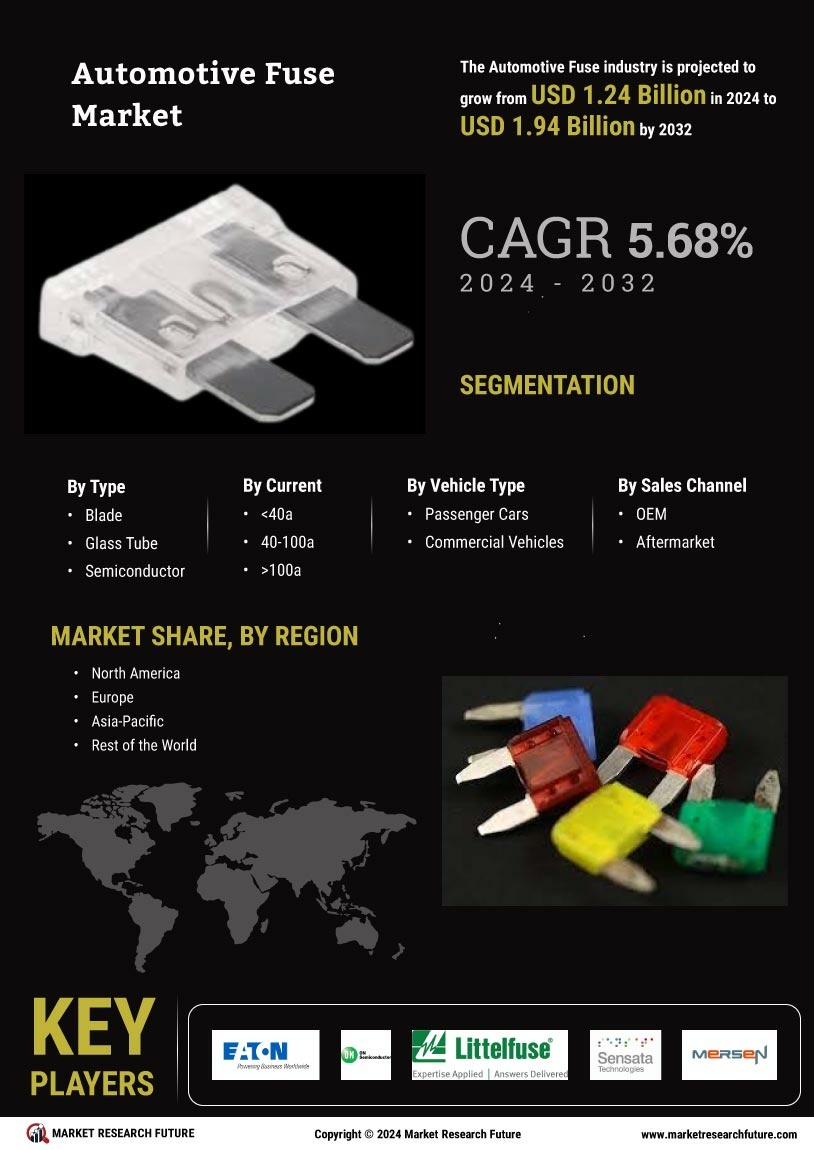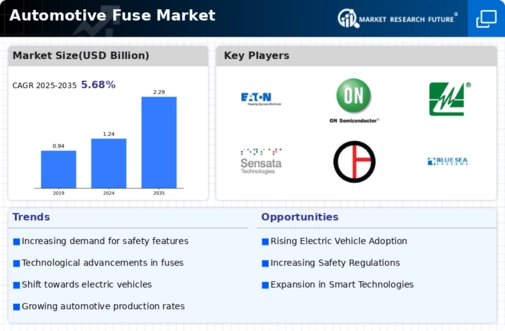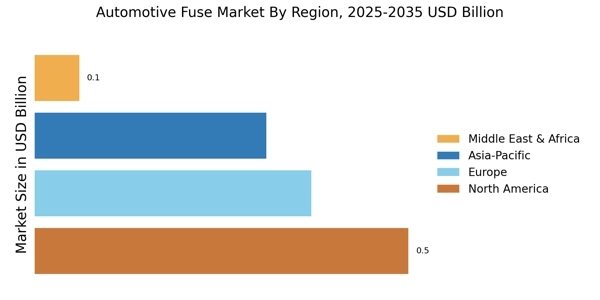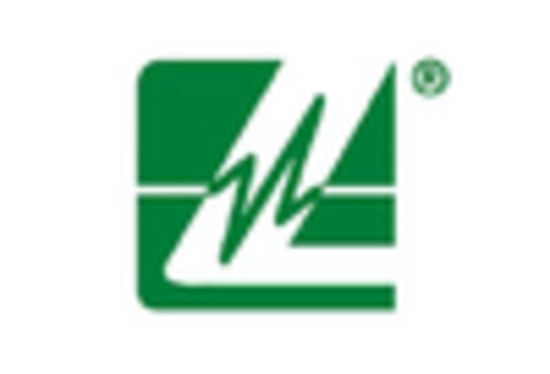Increase in Vehicle Production
The automotive industry is witnessing a notable increase in vehicle production, which directly influences the Automotive Fuse Market. As manufacturers ramp up production to meet consumer demand, the need for reliable electrical components, including fuses, becomes paramount. In 2025, the production of passenger vehicles is projected to reach approximately 80 million units, a figure that underscores the growing requirement for automotive fuses. This surge in production not only drives demand but also encourages innovation in fuse technology, as manufacturers seek to enhance safety and efficiency. Consequently, the Automotive Fuse Market is likely to experience robust growth, as fuses are integral to the electrical systems of modern vehicles.
Growing Demand for Safety Features
The increasing emphasis on safety features in vehicles is a significant driver for the Automotive Fuse Market. As consumers become more safety-conscious, manufacturers are integrating advanced safety technologies, such as collision avoidance systems and automated braking, which require reliable electrical components. The market for automotive safety systems is projected to reach USD 50 billion by 2026, indicating a substantial opportunity for the fuse market. Fuses play a critical role in protecting these systems from electrical faults, thereby ensuring their proper functioning. This growing demand for enhanced safety features is expected to propel the Automotive Fuse Market forward, as manufacturers seek to provide reliable and efficient fuse solutions.
Regulatory Standards and Compliance
Regulatory standards and compliance requirements are increasingly influencing the Automotive Fuse Market. Governments worldwide are implementing stringent regulations to enhance vehicle safety and environmental sustainability. For instance, regulations regarding electrical safety and performance standards necessitate the use of high-quality fuses in automotive applications. Compliance with these regulations is essential for manufacturers to ensure their products meet safety standards, thereby driving demand for reliable fuses. The Automotive Fuse Market is expected to benefit from these regulatory changes, as manufacturers invest in developing fuses that comply with evolving standards. This focus on compliance not only enhances safety but also promotes innovation within the industry.
Rise of Hybrid and Electric Vehicles
The rise of hybrid and electric vehicles is transforming the Automotive Fuse Market. These vehicles require specialized fuses to manage high-voltage systems and battery management systems effectively. As the market for electric vehicles is projected to grow at a compound annual growth rate of over 20% through 2030, the demand for automotive fuses tailored for these applications is likely to increase significantly. Manufacturers are focusing on developing fuses that can handle the unique challenges posed by electric drivetrains, such as higher currents and voltages. This shift towards electrification is not only driving innovation in fuse technology but also expanding the overall Automotive Fuse Market as new applications emerge.
Technological Advancements in Fuse Design
Technological advancements are playing a crucial role in shaping the Automotive Fuse Market. Innovations such as miniaturization and the development of smart fuses are becoming increasingly prevalent. These advancements allow for better performance and integration with modern vehicle electronics, which are becoming more complex. For instance, smart fuses can provide real-time monitoring and diagnostics, enhancing vehicle safety and reliability. The market for smart fuses is expected to grow significantly, with estimates suggesting a compound annual growth rate of over 10% in the coming years. As vehicles become more reliant on sophisticated electrical systems, the demand for advanced fuse solutions within the Automotive Fuse Market is likely to escalate.


















Leave a Comment